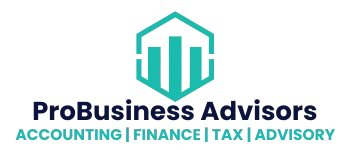A small company scale requires more than a great product or service. Financial strategy plays a key role in ensuring sustainable growth. Without proper financial planning, businesses risk running out of cash, accumulating excess debt, or losing growth opportunities. In this manual, we will explore the highest financial strategy that successfully expands your small business. From cash flow management to ensuring funding, these strategies will help you build a solid financial basis for your small business.
Master Cash Flow Management
Effective cash flow management is the core of every successful business. Cash flow represents money moving in and out of your small business. Without proper management, profitable companies can also try to cover daily expenses.
Follow the cash flows regularly
If you want to drive money flows effectively, watch them every week or at least once a month. Beware of receivables and due. Delayed payments can create narrow spaces, so watch invoices immediately.
Action Tip: Use tools of cash flow forecasts to predict and manage future cash requirements.
Budgeting for growth
Budgeting is one of the highest financial strategies for expanding your small business. A well-planned budget helps to allocate resources, minimize waste and prepare for unexpected expenses.
Create a budget oriented to growth
Match your budget with the target of growth. Prefer marketing, technology, and hiring to support your scaling efforts. Avoid unnecessary expenses that do not contribute to growth.
Action tip: Re-evaluate your budget quarterly to ensure that it is in line with your growth goals.
Optimize price strategies
Prices directly affect your income and profit margins. Determination of the right price requires understanding your costs, competitors, and the customer’s willingness to pay.
Prices based on values
Instead of the competition on the price, focus on the value that your product or service provides. Customers are often willing to pay more for solutions that effectively solve their problems.
Action Tip: Try different pricing strategies to find out which one is producing the most income without reducing demand.
Control costs without endangering quality
The business scale can quickly inflate costs. Maintaining expenditures under control without sacrificing is one of the highest financial strategies for scaling your small business.
Outsourcing of non-major tasks
Outsourcing tasks such as accounting, IT, and content support or creating content can save costs and allow you to focus on basic business activities.
Action Tip: Compare more suppliers and get the best value for outsourced services.
Ensure the correct financing
Financing is necessary for scaling. Whether you need to hire more employees, spread to new markets or invest in new technologies, it is essential to have sufficient capital.
Explore different financing options
Consider business loans, angel investors or risk capital based on your financial needs and growth plans. Crowdfunding is also a viable option for enterprises with innovative products.
Action tip: Prepare a detailed business plan and financial forecast to attract potential investors.
Using tax strategies
Correct tax planning can release capital for reinvesting. Your small businesses often omit deductions of taxes and credits that can reduce their taxable income.
Consult a tax expert
Working with a tax expert in identifying deductible expenditures and maximizing tax loans. Effective tax strategies can significantly affect your lower limit.
Action Tip: Maintain accurate records of all expenditures to simplify tax submission and maximize deductions.
Focus on the financial KPI
Key performance indicators (KPI) help measure financial health and growth progress. The focus on the right KPI is one of the highest financial strategies for scaling your small business.
Follow profit margins and return on investment
The profit margin indicates how effectively your small business converts income to profit. ROI helps to assess the effectiveness of your investment.
Action Tip: Using financial software, follow the KPI in real time and adjust the strategies as needed.
Divel the revenue flows
The reliance on a single flow of income is risky. Diversification sources of income can stabilize cash flow and reduce dependence on one product or service.
UPSELL AND CROSS-PROSELL
Introduce complementary products or services to existing customers. This strategy can increase revenue without a significant increase in marketing costs.
Action Tip: Analyze customers’ behavior and identify opportunities between selling.
Implement effective debt management
The debt can be a powerful growth tool if properly managed. However, excessive or poorly structured debt can prevent scaling.
Consolid High Interest Debts
Replacing debts with high interest rates with lower rates can reduce interest payments and improve cash flow.
Action Tip: Check the loan conditions regularly to identify refinancing opportunities.
Invest in financial technology
Financial technology can simplify budgeting, prognosis, and reporting. Automation of financial tasks reduces errors and saves time, allowing you to focus on growth.
Receive cloud accounting software
Cloud tools offer information about financial performance and streamline tasks in accounting.
Action Tip: Select software that integrates with other tools you use, such as CRM or project management systems.
Common financial mistakes to avoid
Ignoring projection of cash flows: Focusing only on profits can lead to a lack of cash.
Operation of income: Being too optimistic about sales can cause budget deficiencies.
Neglect financial reviews: Regular reviews help to connect problems before they escalate.
Conclusion
The scale of a small company requires a solid financial strategy. By mastering cash flow management, budgeting, and financing, you can create a way of sustainable growth. The implementation of these top financial strategies for scaling your small business ensures that you not only grow, but do so profitably and sustainably.









